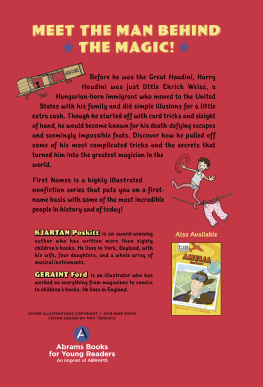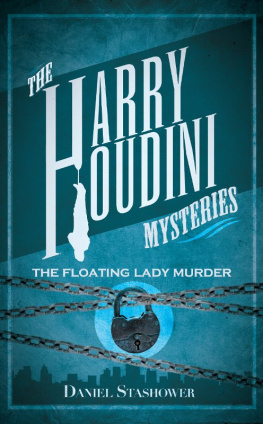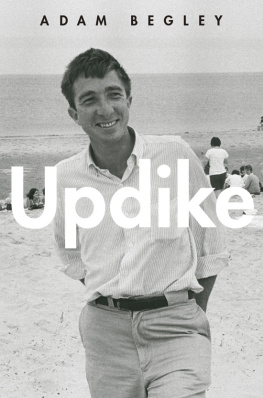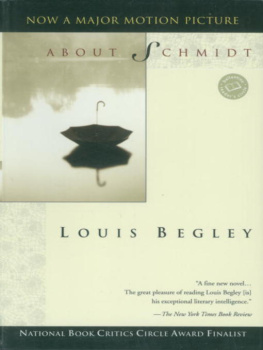Adam Begley - Houdini
Here you can read online Adam Begley - Houdini full text of the book (entire story) in english for free. Download pdf and epub, get meaning, cover and reviews about this ebook. year: 2020, publisher: Yale University Press, genre: Detective and thriller. Description of the work, (preface) as well as reviews are available. Best literature library LitArk.com created for fans of good reading and offers a wide selection of genres:
Romance novel
Science fiction
Adventure
Detective
Science
History
Home and family
Prose
Art
Politics
Computer
Non-fiction
Religion
Business
Children
Humor
Choose a favorite category and find really read worthwhile books. Enjoy immersion in the world of imagination, feel the emotions of the characters or learn something new for yourself, make an fascinating discovery.

- Book:Houdini
- Author:
- Publisher:Yale University Press
- Genre:
- Year:2020
- Rating:5 / 5
- Favourites:Add to favourites
- Your mark:
- 100
- 1
- 2
- 3
- 4
- 5
Houdini: summary, description and annotation
We offer to read an annotation, description, summary or preface (depends on what the author of the book "Houdini" wrote himself). If you haven't found the necessary information about the book — write in the comments, we will try to find it.
Houdini — read online for free the complete book (whole text) full work
Below is the text of the book, divided by pages. System saving the place of the last page read, allows you to conveniently read the book "Houdini" online for free, without having to search again every time where you left off. Put a bookmark, and you can go to the page where you finished reading at any time.
Font size:
Interval:
Bookmark:
HOUDINI

The Elusive American

ADAM BEGLEY

Copyright 2020 by Adam Begley.
All rights reserved.
This book may not be reproduced, in whole or in part, including illustrations, in any form (beyond that copying permitted by Sections 107 and 108 of the U.S. Copyright Law and except by reviewers for the public press), without written permission from the publishers.
Yale University Press books may be purchased in quantity for educational, business, or promotional use. For information, please e-mail (U.K. office).
Set in Janson type by Integrated Publishing Solutions.
Printed in the United States of America.
Frontispiece: Library of Congress, LC-USZC4-3277.
Library of Congress Control Number: 2019947803
ISBN 978-0-300-23079-6 (hardcover : alk. paper)
A catalogue record for this book is available from the British Library.
This paper meets the requirements of ANSI/NISO Z39.48-1992
(Permanence of Paper).
10 9 8 7 6 5 4 3 2 1
For my wife, Anne Cotton
HOUDINI

T HE G REAT H OUDINI , Americas peerless self-liberator, strides onto the stage, resplendent in evening dress, flanked by three assistants, their purple uniforms adorned with gold brocade, polished brass buckets at the ready. He stands near a curious contraption, a mahogany and glass chamber about the shape and size of a telephone booth. He calls it his Chinese Water Torture Cell. In slow staccato rhythms he describes the fearsome apparatus, claiming it as his original invention. He says, I am willing to forfeit the sum of $1,000 to anyone who can prove that it is possible to obtain air inside the Torture Cell when I am locked up in it in the regulation manner after it has been filled with water. Solicitous of his audience, he reassures us that in case of emergency, one of his assistants will be standing by with an ax, ready to smash the half-inch-thick tempered glass, allowing the water to flow out in order to save my life. His smile is a slice of fierce energy. The ax is already onstage, its gleaming blade biting into a wooden block. I positively and honestly do not expect any accident to happen, but we all know accidents will happenand when least expected.
After inviting a committee from the audience to examine the cell, he exits the stage to prepare himself for his ordeal, while his assistants don foul-weather gear and wellies. Once the inspection is complete, the torture cell is filled with water from the brass buckets. Houdini returns in a dressing gown. He removes it. Clad only in a blue bathing costume, he lies down on his back to have his feet clamped in heavy stocks, like a criminal submitting to cruel punishment. Offstage winches turn, and the stocks slowly rise, lifting the magicians legs, hoisting him up over the cell. When he is hanging upside down directly above it, he takes a deep breath, claps his hands, then folds his arms across his chest. Hes slowly lowered into the gruesome chamber, displaced water spilling over the sides as he descends. Padlocks secure a grill at the top. Through the glass panels we can see how tightly hes jammed in; we can imagine the terror, the panicked certainty that escape is impossible.
An assistant draws a curtain around the cell, the orchestra strikes up Asleep in the Deepa dirge to the drowned. Seconds tick by, all of us in the audience fear the worst a minute has passed, two minutes. Surely Houdinis doom is sealedwont an assistant swing the ax? No! Here he is, dripping wet, throwing back the curtain to reveal the torture cell, still locked, the water inside gently sloshing. Once again the Great Houdini has cheated death!
Today we know that the secret of the spectacular Water Torture Cell illusion is mechanical (the ingenious construction of the apparatus). And yet without Houdinis exceptional skill (a supreme mastery of his own fantastically strong and supple body), without courage, without showmanship, the trick would have failedcatastrophically. He relied on human qualities, insisting that there was nothing supernatural about his dazzling, baffling feats.
This book does not set out to answer the question How did he do it? As Houdini wisely remarked when asked: If you knew, you would not consider the feat marvelous or even interesting. Magic explained loses its luster. The question addressed in these pages is Why? Why did he shackle and torture himself, even once he was rich and famous, a household name? Surely there was no longer any need to hazard his life, to dangle nine stories above a crowded avenue, suspended by the ankles and laced into a straitjacket; no need to hurl himself off a bridge into a freezing river, hands and feet manacled. Why repeat these harrowing ordeals, courting death each time? Must a self-liberator also be a self-torturer? Instead of retiring as he occasionally threatened to do, he persisted, adding new twists to his daredevil escapes even as his body aged, ramping up the risk as his hair turned gray. He carried on, stripping naked and offering his wrists to cuffs, his legs to irons, punishing himself and tempting fate until the day he died. What kind of man was this?

A T THE PINNACLE of his fame as an escape artist, Harry Houdini wrote a poignant account of a family disaster that struck when he was a boy, the day in 1882 when his father lost his job as a rabbi: One morning my father awoke to find himself thrown upon the world, his long locks of hair having silvered in service, with seven children to feed, without a position, and without any visible means of support. Such hardships and hunger became our lot that the less said on the subject the better.
The gist of the passagethe dire predicament of a destitute familyis more or less accurate, but the pathos is undercut by a blatant untruth in the sentence that precedes it: My birth occurred April 6th, 1874, in the small town of Appleton, in the State of Wisconsin, U.S.A. Houdini was born in Budapest, Hungary, not Appleton, Wisconsin (and on March 24, not April 6). An immigrant like his parents and four Hungarian-born siblings, he arrived in the United States when he was four years old, deposited in New York City by the SS Frisia, an iron-hulled German steamship. (Two younger siblings were American-born, as he clearly wished to be.) His father, who called himself the Reverend Doctor Mayer Samuel Weiss, served as rabbi for the small Jewish community in Appleton; after four years in the post, he was indeed summarily dismissed, when Houdini (then Ehrich Weiss) was eight. Hardship and hunger ensued.
For the father, age fifty-three, this was the beginning of a dismal downward trajectory that ended with his death a decade later. After a promising start, his American life turned sour, a punishing sequence of petty humiliations. The son saw the fathers failure as a trap. Avoiding that trap was at first a reflex, the earliest stirring of his impulse to escapethe impulse that transformed him into his ideal self, a world-famous unbeatable American superhero. (Another spur was America itself, the expansive opportunity his father was unable to grasp.) He liked to reassure his audiences, I, the true Houdini, will never fail you.
Next pageFont size:
Interval:
Bookmark:
Similar books «Houdini»
Look at similar books to Houdini. We have selected literature similar in name and meaning in the hope of providing readers with more options to find new, interesting, not yet read works.
Discussion, reviews of the book Houdini and just readers' own opinions. Leave your comments, write what you think about the work, its meaning or the main characters. Specify what exactly you liked and what you didn't like, and why you think so.









